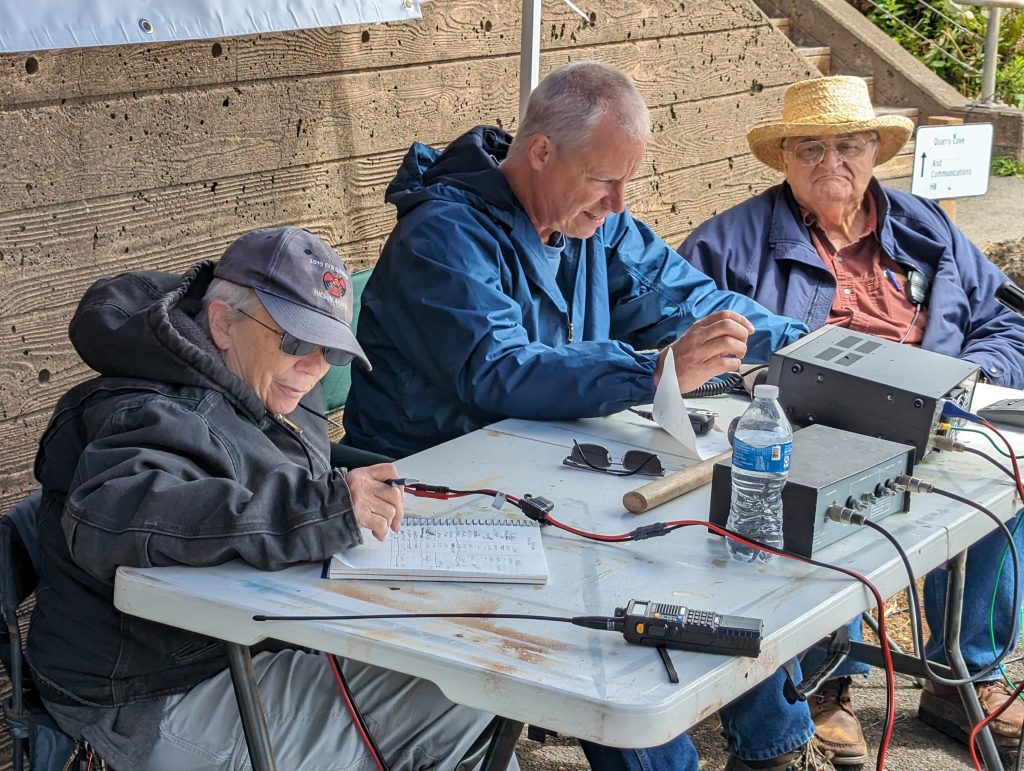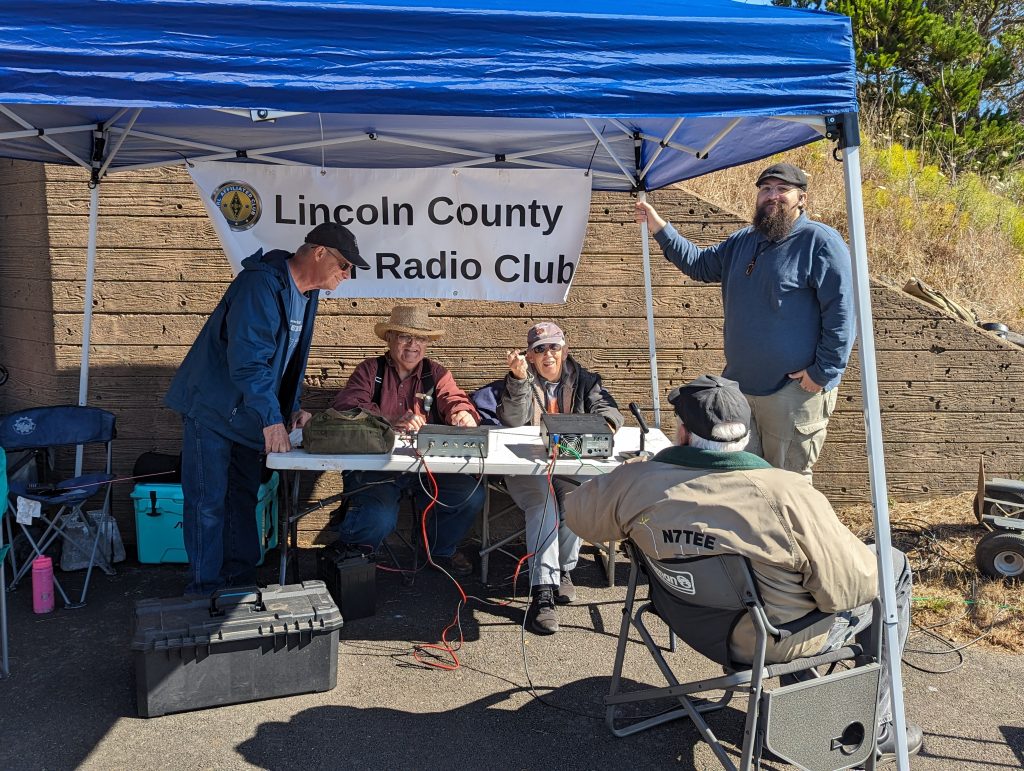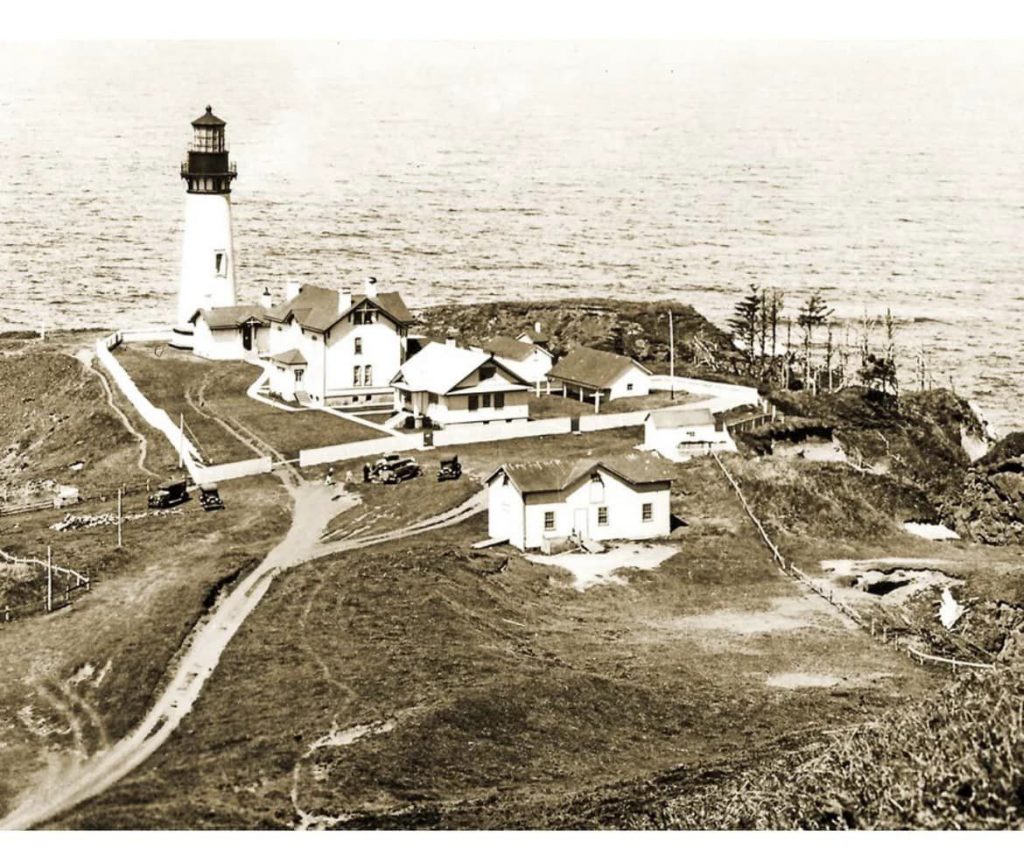I was born and raised in Lincoln County. I lived in Taft which is now a district of Lincoln City. Our house my father built was on “Taft Heights” and looked out to the ocean from the front and Siletz Bay from the back porch.
We didn’t have television until I was in the seventh grade, about 1957. It was a huge 24 inch black and white that my dad built into the end of the living room and was part of a state-of-the-art High Fidelity (not stereo) sound system. Dad was a real craftsman and the mahogany cabinet was a work of art! A company from the Portland area sold him the electronics and provided hookup instructions. The TV signal was provided by an antenna and rotor on the roof and my brother and I were the “remote controls”.
With that picture of my childhood reality, one can understand that radio was a large part of my early entertainment. I listened to and was thrilled as each week a new episode of “The Lone Ranger” came to me via the Halicrafters S-38B’s speaker. “The Lone Ranger and Tonto camped in a grove of cottonwoods just outside of town ….” I imagined the old west to be a bunch of small towns all having a grove of cottonwoods nearby.
Radio programs like “Big John and Sparky”, “The Whistler” and “Captain Midnight” came to life through my little Halicrafters speaker and my imagination! Occasionally I would search the shortwave frequencies and hear boats operating up and down the coast, or a foreign country’s broadcast and sometimes ham radio usually having a “rag chew session” on 75 meters.
The cable system was just getting started and was run by Carl Schmauder who lived in Wecoma Beach at the north end of what is now Lincoln City which was then a bunch of small cities and communities: Cutler City, Taft, Nelscott, Delake, Oceanlake, Wecoma Beach and Roads End. Carl was the mainstay of the cable system. I remember him driving his pickup around and working on the cable strung from pole to pole wearing a climbing belt and spurs. I thought it would be so neat to climb up those poles and work on whatever while suspended by that belt.
As we know, antennas on the Oregon coast are not maintenance free! Carl had approached Dad on numerous occasions to hookup to the cable and Dad always declined as his antenna and rotor “were doing just fine”. But Carl drove by one day as Dad was on the roof working on the antenna/rotor, connecting cables and guy wires. “Say Ben, that’s a lot of work and that shake roof can be awfully slick here on the coast. Why don’t you let me help you bring that antenna and rotor down and I’ll hook you up to the cable. That way the maintenance is my job and you’ll get more channels and better reception.” It was an opportune timing and Dad became another of Carl Schmauder’s customers and we had snow-free reception on multiple channels!
Right now you are probably wondering, “This is all well and kind of interesting, Chuck; but, what does it have to do with amateur radio?” Well, Carl was a ham and a few years later when I was in high school, he was one of my “Elmers” that helped me get my Novice ticket, KN7ORZ dated March 9, 1962 (Yes, I found the notification from the FCC a number of years ago and have kept it with my other and more recent licenses). It started a fascination with electronics and radio that blossomed and waned over the years but has always kept my interest and now as an Extra is a wonderful hobby! Mentors like Carl are a wonderful resource for amateurs! They take a seed of interest and help it develop into thriving plant. I sometimes hear or read of a ham asking a question that seems so simple. Then I remember there was a time when such a question wasn’t so simple!
We need more Elmers! An Elmer can be a technical whiz or more often just a helping hand or an opinion. Someone to help or advise on some of the myriad of questions a new (or not-so-new) ham can have. Someone who is willing to take the time to teach; or to help install an antenna; put that mobile radio in a vehicle; or show how to have a QSO and pickup that signal that is elusive. Sure, one person can install a dipole antenna; I’ve done it. But it can be exhausting and frustrating and take many times longer than if two or more helpers are there. Little things like waterproofing the coax connection or using the right kind of line to hold it in place can make such a difference immediately and down the road! How disappointing when you find your antenna on the ground because the line you used to suspend it has deteriorated from the sun’s UV rays and broken!
I remember not so long ago I thought 15 meters was a dead band. Then I got some advice to use the pre-amp on my transceiver (I have a pre-amp? Oh yeah I do it’s that little button there!) and tune the band more slowly and, zounds, there were signals there! Those signals became contacts and 15 meters has become a band I visit.
Helping others not only is beneficial to the person needing assistance; it can bring satisfaction to those giving the assistance. Stretch yourself, Elmer. Maybe you don’t think you are experienced enough to Elmer; your support can often mean a lot to a struggling ham. Who knows how much you might learn while helping another ham or want-to-be ham work through a problem?
The memories can last a lifetime. I remember had a storefront on Hwy 101 in Oceanlake. If I drove by I would stop to ask a question or chat when I saw he was there. One time Carl invited me to his house to see his station! It was much like the ham stations pictured in magazines but better! This was a real amateur radio station! The room’s walls were covered with the bottoms of egg cartons to provide sound deadening. He had a display of QSL cards from special contacts around the world. On his operating desk was a Halicrafters SX-100 receiver and a Multi-Emac Trans-Citer to drive his amplifier. All those glowing tubes, all those switches, it was so mesmerizing to a 16 year old kid! I was hooked for life! I still have a special place in my head for equipment using vacuum tubes … and in my radio shack as well!
Mentoring is teaching and after 30 years in education I can truthfully say teaching was seldom monetarily rewarding (at one time I worked as a teacher, soldier, grocery store worker and fire fighter to make ends meet and provide for my three children) but the thrill of getting a student to grasp a concept has always been a tremendously rewarding occurrence! One of the best things about our hobby is that there is always something more to learn. Often times by teaching you learn more than you give to the student. Many of you already are helpful to other hams. Thank you! To the rest, if an occasion comes your way help a ham.
Chuck Gerttula W7CRG



